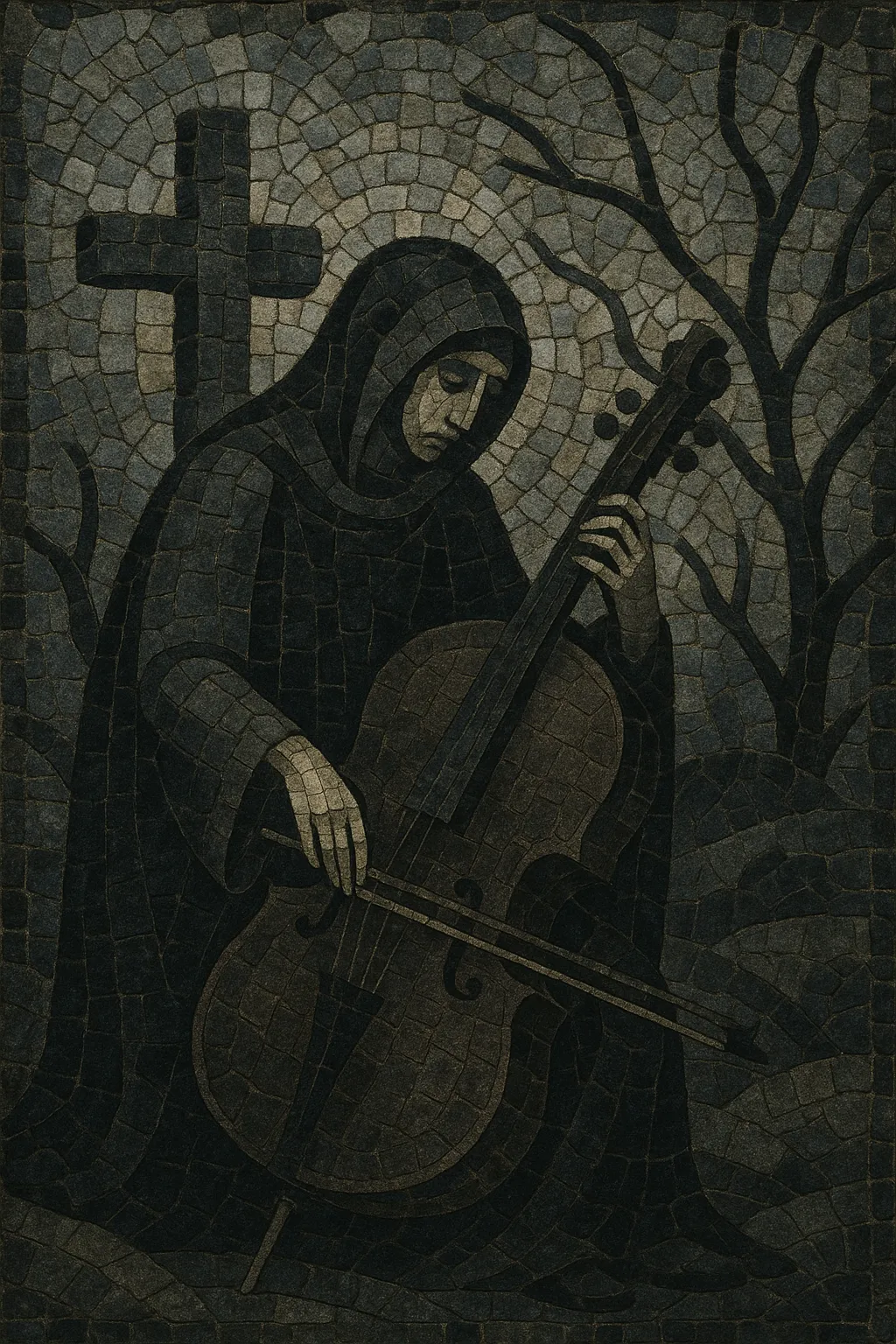
A funeral march is a slow, processional march composed to accompany or evoke rites of mourning, commemoration, and state or military funerals. It typically features a measured, steady pulse that mimics the cadence of a procession, sombre minor keys, and dark orchestral colors.
While the form appears in diverse contexts—from stand‑alone band pieces to movements within symphonies and operas—its musical fingerprint is consistent: heavy dotted rhythms, low-register emphasis (brass, bassoons, cellos/basses), restrained dynamics, and melodic lines that unfold with dignified gravity. A contrasting lyrical middle section (often in a relative or parallel major) before a return of the opening strain is common.
Over time, the funeral march became a powerful expressive archetype, shaping the musical language of public mourning and becoming a recurring topos in concert music and beyond.
Although precedents exist in 17th‑century English ceremonial music, the funeral march took on a recognizable, named identity in the 18th century. George Frideric Handel’s “Dead March” from Saul (1738), performed in London, set a template for solemn, processional pacing, brass-and-drum sonorities, and public commemorative use. The idiom drew on earlier ceremonial and military traditions and on the affective gravity of Baroque mourning styles.
The 19th century crystalized the funeral march as a musical topos. Beethoven placed a “Marcia funebre” as the second movement of his Symphony No. 3 (Eroica, 1804), elevating the form within symphonic narrative. Frédéric Chopin’s “Marche funèbre” (Piano Sonata No. 2, 1837) became the emblematic piano funeral march, widely quoted and performed at state funerals. Composers such as Berlioz (Grande symphonie funèbre et triomphale), Liszt (Funérailles), Wagner (Siegfried’s Funeral March), and Mahler (Symphony No. 5, I. Trauermarsch) expanded orchestral color, contrapuntal weight, and psychological depth.
Military and civic bands adopted funeral marches for processions, with muffled drums and low brass projecting clearly outdoors. This institutional role reinforced the genre’s steady tempo, dotted rhythms, and cadential phrasing designed for coordinated movement.
The funeral march trope persisted across concert music, film scoring, and popular culture. Composers and orchestrators use its rhythmic profile, harmonic gravity, and instrumentation as shorthand for mourning and heroism-in-defeat. The aesthetic also fed darker popular idioms—most explicitly in funeral doom metal—where extreme slowness and weight evoke the same ceremonial gravity in amplified form.

